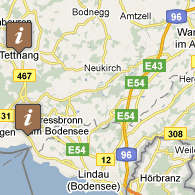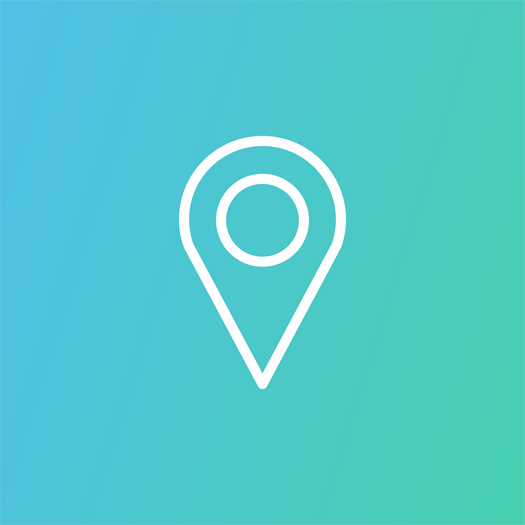Mastering Local Search

By Manish Patel
Local search is the flavor of the day. But what is it? What is the buzz all about?
At its core, local search is simply understanding today's consumer, their behavior and their needs, and providing a product or service where and when they want it. It's exciting because local search works equally well for small- to medium-size businesses trying to get found, as well as big regional and national brands.
First, understand that in a search driven world there are two types of user searches: 1) consumers who are looking for your brand and 2) consumers who are looking for your type of services. For consumers, it's all about being in control and having choices.
Brand Seekers
If users are looking for your brand, they will most likely look for you on your corporate website. But the trend is moving towards consumers entering in your brand name and a local qualifier (city or zip code) directly into a major search engine to find the nearest location: for example, "Red Lobster locations in NJ" or "Coupons for Red Lobster in Illinois." The worst-case scenario is if it doesn't show up at all. The second worst case is that it shows up, but takes them to your corporate website home page, meaning they have to do the search all over again. That's not very user friendly.
Service Seekers
If consumers are looking for your type of services (a restaurant, office supply, grocery store, sporting goods) then they will most likely start their search on a major search engine. The trend is going towards consumers entering in your generic services and a local qualifier directly into a major search engine to find products and services: for example, "Crab legs Lewisville TX," or "Seafood Luzerne PA." Worst case is that you don't show up at all but your competitors do.
Traditional marketing methods include print yellow pages, TV, radio, billboards, direct mail, email marketing and referrals. But to ensure success in today's highly competitive market, advertisers must embrace not only the major search engines, but increasingly an array of other relevant and effective new media platforms such as local directories, corporate websites, mobile devices and even portable navigation devices. Casting a wide net will ensure customers find you anytime or anywhere they are ready to buy.
Major Search Engines
There are three distinct areas on a search engine results page (SERP.) It's very important to show up in at least one of them if not all three, called the Search Trifecta.
By now most of you have heard of Search Engine Marketing or SEM. It refers to the paid search or sponsored listings that show up on the top and right side of most search results. Most of the ads are Pay-Per-Click (PPC) or Pay-Per-Acquisition (PPA.) The top search engines that businesses set up campaigns with are Google, Yahoo, MSN and Ask. You can try to manage it in-house but there are third party companies that can manage it for you.
Local search is a widely-used term, but when referring to search engine results it's the section that's associated with a map when a local qualifier is used.
Organic listings, (SEO, also referred to as free listings) show up after the paid and local results. If someone searches your brand, then you will most likely appear. But if they use a local qualifier then you might not. There are many companies jumping into the SEO/SEM bandwagon who want to help. Make sure to do your homework before hiring anyone who wants to convince you that it's too complicated to explain what they will be doing for you. Local landing pages or micro-sites are key in helping out businesses with multiple locations.
For businesses with multiple locations it's important to have local landing pages to drive this online search traffic. If a consumer searches for a local location, they won't want to be directed to your corporate website home page. They will want location specifics. These landing pages can be used for paid search, local submission and organic search. Reporting should be set up in order to track where your traffic is coming from (what search engine and what area of the page) and call tracking to evaluate ROI.
It's important to get listed in local directories that include Citysearch, Yellowpages, and Superpages as well as Google Local, Yahoo! Local and MSN Live since they attract significant amounts of traffic.
Corporate Websites
In this day and age every business has a corporate website. But you may not know of all the different ways to increase your foot traffic or online sales.
For retailers, it's important that users can quickly and easily find your locations and the specific details of each. Interactive maps and driving directions (preferably without the user needing to leave your site) is a must-have these days. With Web 2.0 capabilities it's the user experience that counts. Content such as store hours, menus or flyers, credit cards accepted, brands carried and reviews can help consumers with their search and items such as coupons or local events can add a call to action. You can also engage visitors with registration for e-newsletters or club discounts. Send to Phone/Email is a good way to track location traffic as well as provide driving directions. Remember that locator functionality is the top decision-making tool consumers use when visiting a retailer's website. A customer who uses a locator is most likely going to walk into your local business.
For manufacturers, embracing the new shopping trends of "Buy Online" and "Buy Local" will give you a business edge. Compared with customers who shop only at stores, multichannel shoppers buy 12 percent more often, and spend 32 percent more every year. That's good news, if you ride the trend. Product locators, for example, will help you tap into multiple sales channels, increasing opportunities for additional sales and expanding your brand recognition. For buy online, you need the ability to show multiple online retailers (etailers) complete with inventory and pricing, as well as the ability to take the consumer directly from your product page to an etailer product page so that the user doesn't have to do the search all over again. For buy local, you need the same features mentioned above for retailers.
Regardless if you are a retailer or manufacturer, your corporate website needs to be SEO-friendly in order for the search engines to crawl and find the data in order to have the links show up in the organic listings.
Mobile Devices
There are now over 255 million mobile devices in the US with more than 69 million people using mobile browsing and 125 million people using text messaging.
Users are going to be searching for your products and services, so it's imperative that you enter into this arena soon. Around 80 percent of phones are WAP enabled (versus smart phones with full internet access), so they will need reduced text for their smaller screens for finding a location. SMS text can be sent to a phone from a PC (1-way SMS) or text (for example a zip code) can be sent to a common short code CSC (mysbux) to get locations text-messaged back. Interactive Voice Response can also be used to reduce overhead costs. For example, call an 800 number, enter in your zip code to hear an automated response of the locations near you.
What are Consumers Searching For?
From Retailers
- Where is the closest location?
- Can I find locations along the way?
- What hours are they open?
- What credit cards are accepted?
- Do they offer any discounts or coupons?
- Do they have wi-fi?
- Do they have RV parking?
- Can I send the driving directions to my mobile device?
From Manufacturers
- What products are offered?
- Can I buy it online?
- How does the price compare between retailers?
- Is it in stock?
- Can I buy it locally?
- Where is the closest retail location?
- How do I get there?
Remember, today's consumer likes to research online, demands choices and wants to control the buying process. It doesn't matter if you're Seiko, Darden or John's Catering, every business must understand who they are and the needs they fill. Mastering local search is not rocket science but it's an ever-increasing skill set required for marketers in today's search driven world.
About the Author: Manish Patel is founder and CEO of Where 2 Get It, Inc.










